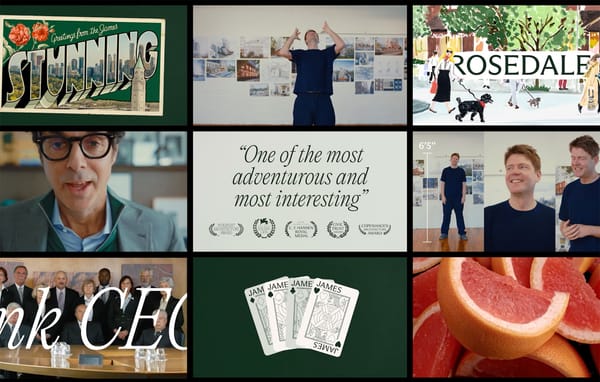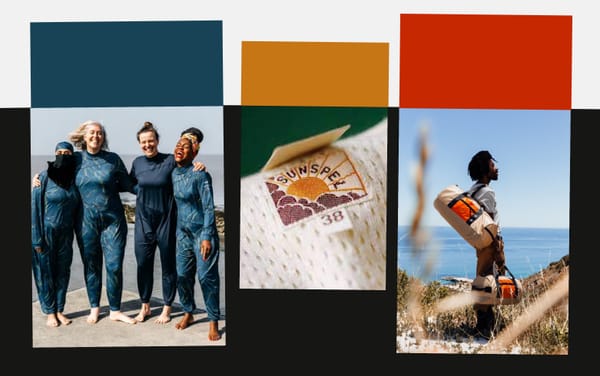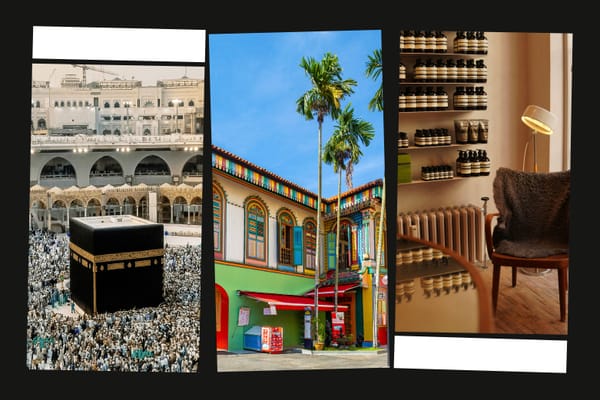Drew Austin
On how technology is reshaping urban public spaces

Episode Transcript
Drew Austin: In my neighborhood, a lot of cool new places have opened up and they become really popular really fast because the internet is such an efficient mechanism for people finding out about new things. It seems like it used to take people longer to find that stuff. So now everything just gets really popular, really fast, if it’s good or cool or whatever. And that’s fine. But I think that also the visual component of that is that things have pressure to be more Instagrammable or to play better on TikTok. I think it’s interesting how social media is reshaping the physical environment in that way and creating these incentives for people to change the physical world.
Brian Sholis: Hi, I’m Brian Sholis, and this is the Frontier Magazine podcast, where I interview artists, writers, technologists, architects, and other creative people about their work and the ideas that inspire it.
Today I’m speaking with Drew Austin, author of Kneeling Bus, a newsletter on urbanism and technology. He’s well-suited to write on those subjects, having studied city planning at MIT, worked in the public sector in Chicago and New York, and spent half a decade in operations and logistics at Uber. I first encountered his writing in Real Life, a magazine about living with technology that existed from 2016 to 2022 and which I miss greatly. For me, Drew’s writing has an observational sharpness that leads to deep insights. He connects what he sees walking around New York and other cities to the largest technological forces shaping society.
You can learn more about Frontier Magazine and subscribe at magazine.frontier.is. Thanks for listening. And now, my conversation with Drew Austin.
BS: Since we’re speaking over the internet, I thought it could be interesting to begin our conversation by locating ourselves in physical space. I think some of the details might help outline the subject matter I hope we cover. Would you like me to go first?
DA: Sure, go ahead.
BS: So I’m in the basement of a century-old building in the west end of Toronto. It was renovated about fifteen years ago by one of the city’s leading architecture firms for use as its own office. Right outside our front door is a streetcar stop that connects this area to downtown. Right across the street is an old bank building that’s now a Starbucks, which was also used as a location in the John Waters film Hairspray. And it’s at the edge of a neighborhood called Roncesvalles, which was once heavily Polish, but now through gentrification it has lost the density of that particular population. How about you, where are you?
DA: Excellent. So to connect to what you just said, I also live in a heavily Polish neighborhood, in Brooklyn. The neighborhood is called Greenpoint. I’ll start with the neighborhood and work backward towards my, uh, exact location in my house.
Greenpoint is a rapidly gentrifying neighborhood, just north of Williamsburg in the north part of Brooklyn. I’m around the corner from a really busy commercial street called Nassau Avenue, which has tons of bars and restaurants, coffee shops, everything you’d want, really vibrant and fun. I’m around the corner from that on a tree-lined street called Leonard. I guess I shouldn’t provide too much detail about where I am [laughs], in case people want to stalk me or whatever. But yeah, I live in a really great building. I love this neighborhood. I want to stay here as long as possible.
BS: I want to start with some of the first writing of yours that I came across, maybe four or five years ago, before the pandemic. You were writing frequently about how tech hardware like AirPods and software, like games and apps on our phones, condition our behavior. I wonder if you could just talk about how those things not only shape us individually, but also have what you call externalities that affect our social interactions, too.
DA: I think about this a lot and it’s a great question. We all have iPhones and have for over a decade. What’s interesting now is we’re seeing the mature phase of how this has all conditioned our behavior. Like when you think about 2010, the idea of having a smartphone wasn’t as ubiquitous as it is now. So we’re kind of at this phase where we’re seeing the true infrastructure of an iPhone society.
And one thing I think about is dating apps. When I talk to people that use dating apps or just see how dating apps have affected their social interactions, it seems like we’ve taken something where physical, face-to-face interaction was the primary assumption and then replaced whatever serendipity was involved with that. And now it’s almost like you have to start with a dating app to meet people.
And I think that we’ve seen versions of that in a lot of how we use public space. The way that, if I go out and walk around, it’s less assumed that I’m going to be talking to random people. I might be projecting some idealized notion of the past, but I do think that a lot of things used to be done in more direct, analog ways, we’ve now found much more efficient ways to do them using the internet. That said, you can use the internet to create opportunities for face-to-face interaction in ways that you couldn’t before. But, overall, we’re a lot more likely to see the entire world, physical or digital, through the lens of the internet and apps.
We should think more about these incredibly beautiful neighborhoods in your city that only multi-millionaires can live in. That’s a problem.
BS: I mentioned that you were doing that writing in 2019 or 2020, and I think it’s probably fair to say that the COVID-19 pandemic, and especially the waves of social restrictions that governments placed on people, accelerated that trend of using digital platforms and services and devices to mediate our experience of public space. And I was struck by one observation you made in 2020 about who was using public space when the rest of us were in lockdown, and what that says about economic arrangements and lifestyle choices. So I wonder if you could just talk a little bit about what you saw out your window and in your neighborhood and in New York City during lockdowns.
DA: Absolutely. I’m still in the neighborhood I was in during 2020 and the whole pandemic, Greenpoint. In a lot of ways, it was a great place to be during that time because first of all, a lot of the people that live here stuck around, whereas a lot of other New York neighborhoods seemed to empty out. It never felt like a ghost town. And there are a lot of parks and various degrees of public space, both formal and informal, that were available.
Obviously it was a horrible year in many ways, but what I like to say is the public space was de-consumerized. I think that most of us who live in cities like New York or Toronto, our usage of public spaces is very consumer-driven, whether it’s going to a bar or a restaurant, a mall, a shopping center. There’s all these expectations that you’re buying things if you’re occupying the space that you share with other people. And during the pandemic, all those places were closed. So all we could do was just go to the park and make our own fun. It was very interesting to me to see that shift. And I think that mentality has in some ways persisted in the years since.
BS: Yeah, it's interesting. I think you’re describing a slight counter trend to one that maybe ties into a broader topic that you’ve also written about, which is that the image of the city matters much more now and that it requires a different sort of built environment. I wonder if you could just talk a little bit more about this idea of the consumer-oriented city and what kind of built environment that requires.
DA: Yeah, well, like I said, public space tends to be much more privatized. Even if it looks public on the surface, you’ll find that a lot of the public spaces you encounter are a little bit more like a mall. Hudson Yards is a new development that got a lot of attention. It opened right before the pandemic, and it is effectively an indoor-outdoor mall. But it is also usable as a public space for most of the things that people want to use it for. But if, let’s say, you wanted to have a Black Lives Matter protest, you might have encountered a bit more friction in a place like that than in a true public space. So there are limits.
But also I think that there’s just a need for the city to be more legible to the internet and that kind of feeds into the consumerism of it. Whether it’s people being able to use Google Maps to search for what restaurant they’re going to eat at, everything is filtered through this idea of, “What can I find on the internet?”
I’ve seen this because in my neighborhood, a lot of cool new places have opened up and they become really popular really fast because the internet is such an efficient mechanism for people finding out about new things. It seems like it used to take people longer to find that stuff. So now everything just gets really popular, really fast, if it’s good or cool or whatever. And that’s fine. But I think that also the visual component of that is that things have pressure to be more Instagrammable or to play better on TikTok. I think it’s interesting how social media is reshaping the physical environment in that way and creating these incentives for people to change the physical world.
BS: And yet, if I remember the line correctly, it was something like the photogenic city is not necessarily the best city or the most people-friendly city.
DA: Yeah.
BS: And I wonder if you can just talk about maybe what gets lost or what that change does for the experience of space and how people inhabit it together.
DA: We talk about gentrification a lot. That’s a really loaded term, a legacy of the Jane Jacobs vision of urban planning, which I think is still super compelling and powerful. And she was obviously right about so much. I think in the landscape that we live in—the consumerist, capitalist city—what’s happened is because there’s such a shortage of those beautiful, West Village–type spaces that she loved, they’ve become so expensive to live in. And they’ve become not only expensive, but they’ve become investment vehicles. And you would think that if we could just create more of that kind of urban fabric, it would make it more accessible to more people.
And I mean, that’s a really worthy goal. But in the meantime, I think a lot of why people consider moving to the suburbs is because it isn’t as photogenic. You’ve got these huge roads and strip malls and stuff, but it’s more optimal for a lot of people’s overall life needs, whether it’s more space or affordability. So I’m not praising that either, but I think that we should think more about when you have these incredibly beautiful neighborhoods in your city that only multi-millionaires can live in, that’s a problem. And there needs to be a way to democratize that. And it might be something we have to figure out before we’re able to build that kind of urban fabric everywhere in the country, which is also, again, something we should be trying to do.
BS: Yeah, it’s funny that you bring up the example of Jane Jacobs, who is both a writer who connects New York and Toronto, but also somebody who moved from writing specifically about urban space and the texture of the urban environment to writing about larger kinds of economic and philosophical issues.
DA: Yes.
BS: And it’s also funny that we’re having this conversation twelve hours after, I think it’s New York magazine or Curbed published an article about West 11th Street in the West Village, which you cite. And now people are no longer just buying one of those early-nineteenth century townhouses, but buying multiple of them and combining them into mega-mansions, but within the fabric of what’s ostensibly a dense and urban and walkable and charming and quaint environment.
DA: That’s a perfect example.
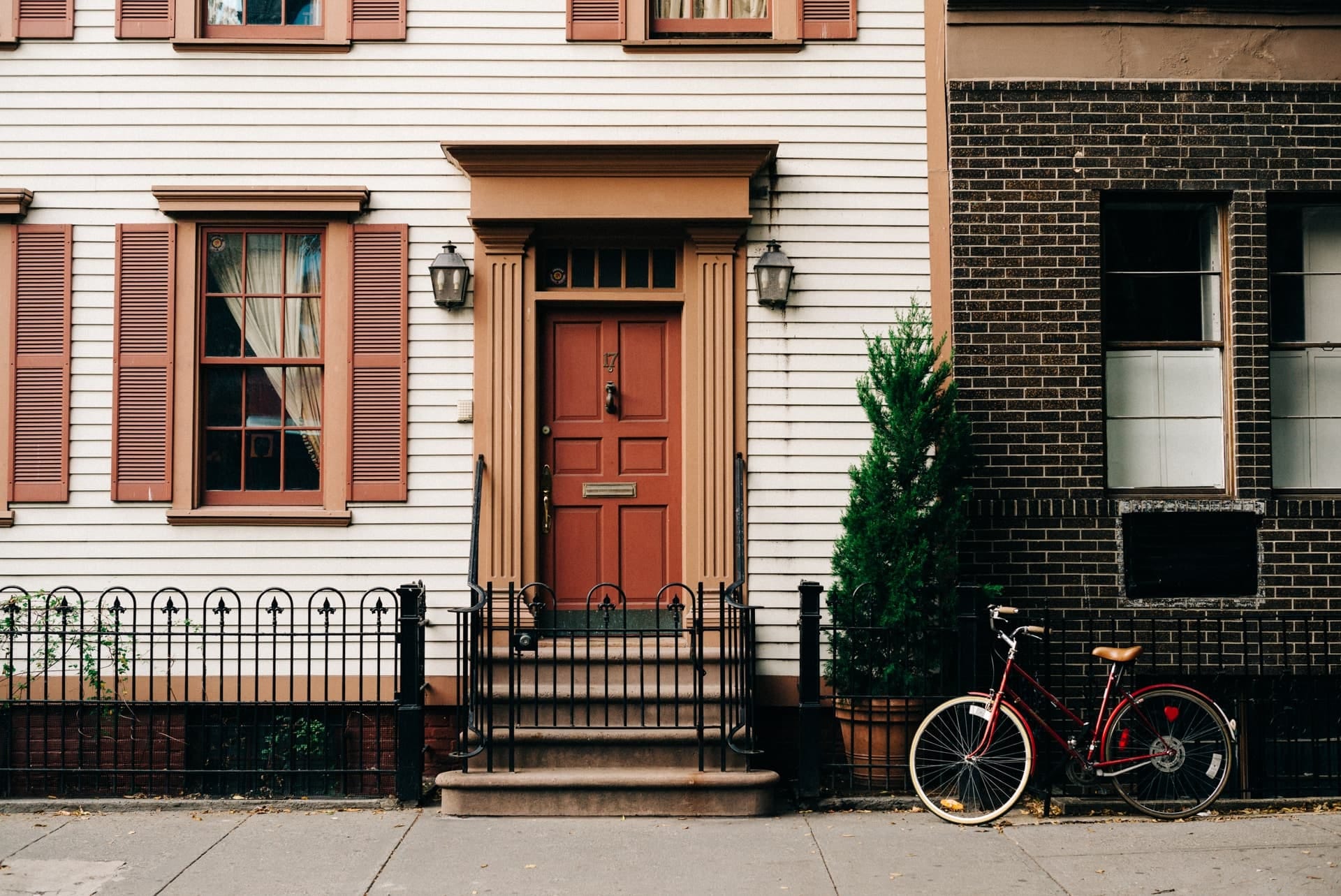
BS: I think you do make a distinction in your writing between the available housing and the available shelter. And that housing, especially housing as an investment, is something that there is an increasing supply of—or potentially even an infinite supply of. But that shelter is something that’s much more limited, much more constrained.
DA: Yeah. The imperative to build more housing in cities that have these affordability issues, obviously it’s an important solution, but it’s limited in the sense that it can be absorbed in these different ways by different imperatives, like investment or consolidation into these mega units.
I think that the wealthy inhabitants of cities are able to continuously expand their residential footprint and absorb more and more housing. Or on a more accessible level, people that are living in multiple cities and kind of cycling through apartments and subletting or using long-term Airbnb rentals, that’s taking a certain type of housing away from a different type of person that might find [the city] more accessible otherwise. It’s a much more complicated question than just building more housing, which of course is also something that needs to be done.
BS: I’d like to turn the conversation a little bit to the kind of texture and experience of public space. And basically I want to cop to something and—
DA: [Laughs]
BS: … then let you riff.
DA: Cool.
BS: You know, I have definitely looked at my phone during the entirety of a crosstown Uber ride.
DA: Yeah.
BS: I’ve occasionally checked my email and my Slack messages while walking the dog through my neighborhood. But maybe it doesn’t feel too embarrassing to say so because that’s now a norm rather than an exception. But also, at the same time, stopping to say that out loud reveals the absurdity of it, of being so disconnected from the space that you’re moving through—or inhabiting, in the case of my neighborhood—and what gets lost when I do that. And you’ve written perceptively about just that level of … we’ll call it screen absorption and what that does to people’s experience of public space. Maybe I’ll ask you to cop to your own foibles once, and then also talk a little bit more abstractly so that I have an ally or somebody who’s as fallen as I am, but then also someone who can talk about it [theoretically].
DA: Well, I’m exactly like you. I’m very guilty of it. I’m no better than the average person, really. I’m always looking at my phone at inappropriate times when I’m out of the house. But I, like you, maybe I aspire to not do that. And I think most people would put themselves in that category.
And it’s so ingrained. It almost feels impossible to complain about because I’m still just kind of amazed that Apple was able to create this device. Not just Apple, but all the smartphone models out there are just so compelling to us that we have oriented our whole society around them. It’s really, on one level, it’s an amazing accomplishment.
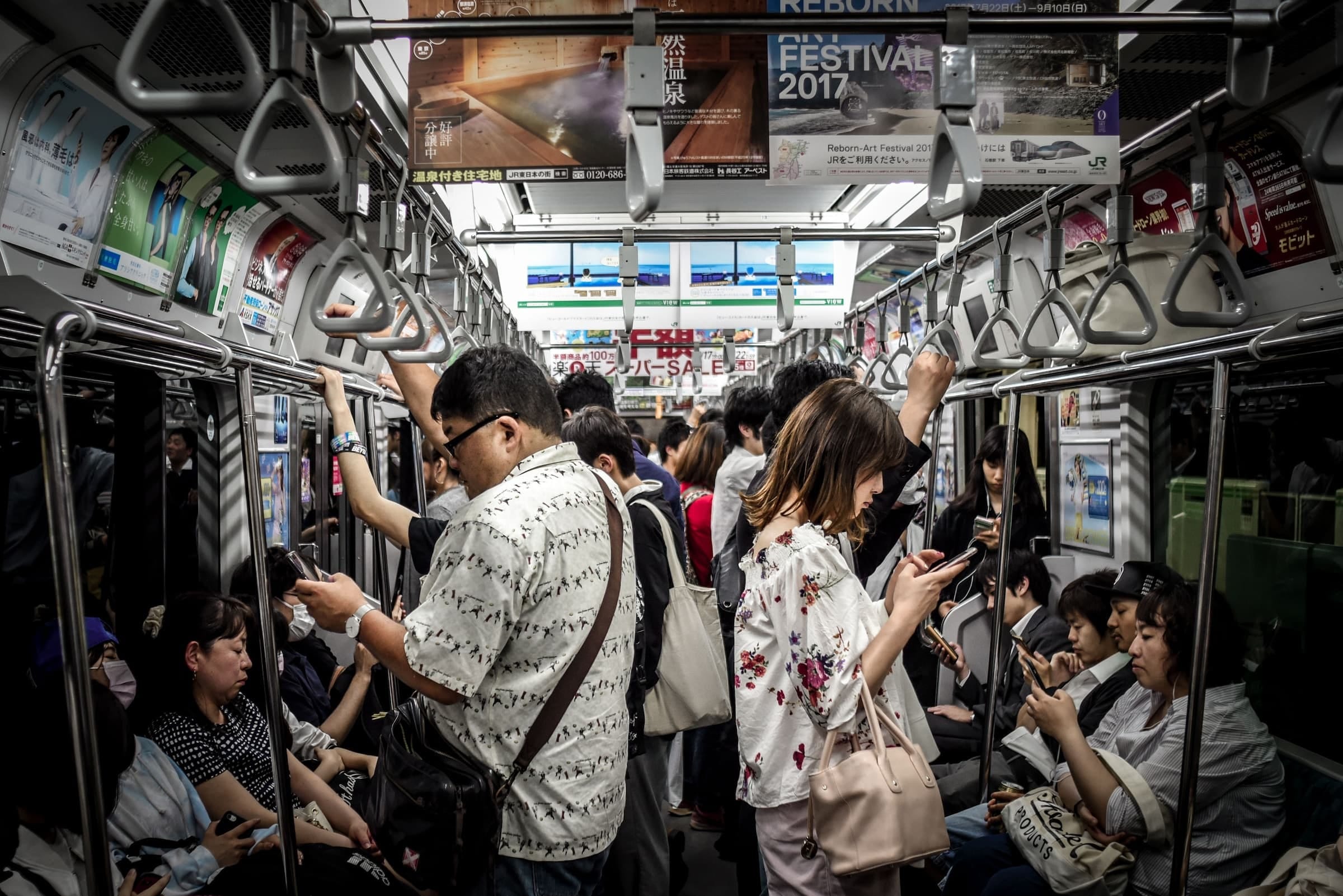
BS: It’s reorganized habits and social relations and now public spaces in a scant fifteen, sixteen years. I partly wanted to ask that question because the idea of moving through a city and only locating yourself at the two nodes at the beginning and the end of a trip, and almost not being in the city during the transition from one to the other, creates a different relationship you have to your environment. It’s not a continuous field with a texture that changes and that you can sense as a series of, we’ll call them gradations.
DA: Yeah.
BS: But instead [it’s] just a distinct network of individual nodes. And part of why I am curious about that is because if we’re going to fight or develop the political will or find reasons to try and make better public spaces and figure out how to use them, I wonder if that becomes harder because we aren’t actually engaging with the entirety of the public spaces that are available to us and around us.
Moving through the city is becoming more like air travel, where going from airport to airport and flying over places that you have no idea about.
You’ve mentioned a few times the economist Albert Hirschman and his idea of exit versus voice and the idea of loyalty in the realm of economics, but you’ve applied it to cities. I wonder if you can just talk about if indeed a network of nodes is a hollowed-out version of the city experience and whether that does contribute to a tendency, when there’s any kind of rough patch, to just exit, to walk away, to move out, to try a different place.
DA: Well, I think the Uber example is great. I’ve been really fascinated by this, how we relate to space. If you search for something on Google Maps, you see what you’re looking for. You search for it and then you get an Uber and go to it. There’s less appetite for walking around and just seeing a place that looks inviting. We want to see the rating on Google Maps before we commit. Then we just take the Uber and we effectively teleport to the place. And there’s less [an] idea of the things around it having something to do with the place that we’re going to. Everything becomes more like air travel, where you’re just dipping from airport to airport and you're flying over places that you have no idea what they are.
Maybe we’re not as grounded in our neighborhoods. And we’re also very transient. I noticed that [during] the pandemic, once you removed the work tether, that was the last thing tying a lot of people to where they were. People were very happy to move immediately. All we needed was that last push.
BS: One of the things that struck me with some of your more recent writing is your desire to actively look for spaces that acknowledge and make room for varied uses.
Maybe I’ll just continue with this idea of the consumer city and the idea of digital platforms shaping space. Now every restaurant has seats for customers who want to stay, but at the same time, also maybe an extra entrance or a line of delivery drivers who show up at the front door and who have to jostle for space to get their orders and get on their way. And there’s a contrasting set of uses that maybe have always existed, but that now are more visibly fighting for spaces that don’t serve them well. So I wonder if you can just talk a little bit more about public spaces that work and what are the things we need to start accommodating, given the shifts that we’ve described being wrought by technology.
DA: Yeah. So the delivery example is really something I see firsthand. These places that do huge delivery volume become these informal hubs. You see twenty to thirty bike delivery guys hanging out in front of the restaurant and there’s no real place for them. They have to claim the sidewalk for themselves because it’s a gig platform. So we’ve outsourced the whole responsibility for, you know, employee break rooms, accommodations … we’ve basically eliminated that.
I see a lot of people complaining about how there’s these e-bikes using the sidewalks. You can’t really complain about that if you're one of the people that uses those services, because that’s the arrangement. That’s the externality that we get if we want food delivery, the way that it’s structured now.
Another silver lining of the pandemic was there was this reappropriation of street space for outdoor dining huts. There are a handful that were actually pretty nice spaces for the restaurant and they’ve been able to keep them as permanent fixtures. There’s a lot of opportunities to take underutilized space and reuse it for something better. And I think that people have good ideas for what to do with space if given the agency to make their own decisions.
I think that the flexibility at more local and individual levels for how we use public space is a valuable thing.
It’s one of my core beliefs that people really do know what they want. If you give them the leeway to do what they want, they will do really interesting things.
BS: Mm-hmm. I’ll go back just to what you said about people becoming frustrated with the presence of delivery drivers on the sidewalk. It reminds me of the line that you’re not sitting in traffic, you are traffic.
DA: Yes, exactly. That’s exactly what it is.
BS: I wonder if you think that part of the challenges that are faced by cities now and part of the challenges in how we accommodate ourselves to public space and to each other after the pandemic are a result of being in some sort of interval period between one era and another. Maybe cities and public space and how they’re designed can’t keep up with what we were just talking about as being a fifteen-year total transformation. And that our idea of what a city [is] may be still rooted in a Jane Jacobs, twentieth-century belief in the beauty and the ballet of the street. Maybe that’s a little bit outdated, but then also, of course, the physical environment—because infrastructure takes so much time and effort to move and reconfigure. We’re just stuck in a holding pattern until the new city emerges.
DA: That’s a really good point. The car was the big transformative technology of the twentieth century. And the car had a massive transformative impact on the physical landscape. If you looked at a picture of cities in 1900 versus the year 2000, it would be completely different. The phone has transformed our information landscape, but it hasn’t had the same impact on physical infrastructure.
So I remember observing this. I was looking around this dive bar and thinking, “With a few minor exceptions, this looks almost exactly the same as it would have looked fifty years prior.” And it’s interesting that the future arrives in this non-visual way. So the things we’re thinking about when we’re at the bar are different and the ways that we’re interacting are different, but a lot of things look the same. The phone’s transformative impact has been sort of subtle—or not subtle, but non-visual.
BS: That sort of Times Square–ization of the rest of the city by virtue of all these screens, nonetheless, that’s just a skin that gets wrapped on the same cast-iron loft building, and the streets have not been widened, the intersections have not been rethought, and then these little microspaces have not been reconfigured for people’s more pressing and more immediate needs. And also because they’ve been privatized, maybe that opportunity for change is somewhat foreclosed, as you were saying earlier.
DA: Yeah. Well, like the article you mentioned of people combining three or five or six units into one huge unit. I think that’s a great metaphor for what’s happening today, which is that the city looks the same on the outside, but the people who are elite are able to subtly reconfigure it for their own ends. And the people that aren’t, you know … there’s obviously like very visible homelessness everywhere, but the discourse doesn’t often connect those two phenomena.
You know, if you’re wealthy, you can basically just go from place to place. And whenever something gets bad, you can leave again. I think the pandemic really established a new precedent for that, with people kind of running away from things. In American culture, it’s always been about running away from things and seeking new, open territory. And now that the frontier is closed, we’re circulating back to places that have already been built and maybe, you know, recolonizing them for new purposes.
BS: As you talk, I keep thinking about this idea of slippage, in part because one of the things that you wrote that stuck with me has to do with the interplay between conscious design and the social norms that govern spaces or help them to function.
DA: Yes.
BS: You wrote something along the lines of, the best cities or the best environments, the ones that Jane Jacobs herself celebrated or that the architectural theorist Christopher Alexander celebrated, they need to be both consciously designed and then also we need to have an understanding of how they’re to be used so that they can continue to function well. And maybe now in the 2020s, those two things are out of alignment. The social norms have changed pretty dramatically, but the conscious designs are not keeping up.
DA: I think as urban designers and urban planners, we’re trained to focus so much on the built environment and the physical design. And I think we over-index on that. And we obviously know that the protocols and social norms and usage patterns matter too, but I think we’re more likely to think we can redesign our way out of problems. If we think more about the rules, governance, there might be more low-hanging fruit there. We might get farther with that in a shorter time period. Because, I mean, it’s so difficult to build things. We should be trying to do that too, but the goals of building or redesigning cities, that’s a more long-term goal that should be pursued in parallel with these efforts to think really deeply about how we use space.
Because of the internet, we should be more adept at doing that than ever before. And in some ways, I think we are, but the digital tools we have at hand give us a lot of ability to use our cities and the built environment we have more intelligently.
And there’s benefits and drawbacks to that. Mid-pandemic, I remember hearing that there was like a housing crisis in Bozeman, Montana. And that was obviously from all the people leaving the coasts and trying to move there, either temporarily or permanently. But that kind of mobility is enabled by the internet because you can work from Bozeman, you can be in touch with all your friends and it can feel almost seamless. If people are just flocking from city to city and creating housing-affordability issues, the solution to it isn’t just building; it’s not like you’re going to make Bozeman big enough to accommodate all these people. There’s some other approach that needs to be adopted. And I don’t know what it is.
BS: It’s tough to know for that particular case, but it feels to me a little bit like something that you articulated earlier is where the beginning of those solutions lies, which is that devolving authority down to a neighborhood or a local or a block level—
DA: Yes.
BS: … so that people themselves can appropriate space and use it for the ways that serve them best. And those kinds of local solutions can be built, tested, and potentially then scaled up.
DA: Yeah.
BS: Maybe we can come to an end by letting me ask you what are some examples of smaller initiatives, design tweaks, that show you a way forward for how cities can work and be more equitable and public spaces can foster the kind of rich and entangled and bumpy and sometimes inconvenient but nonetheless enriching experiences that we all pine for.
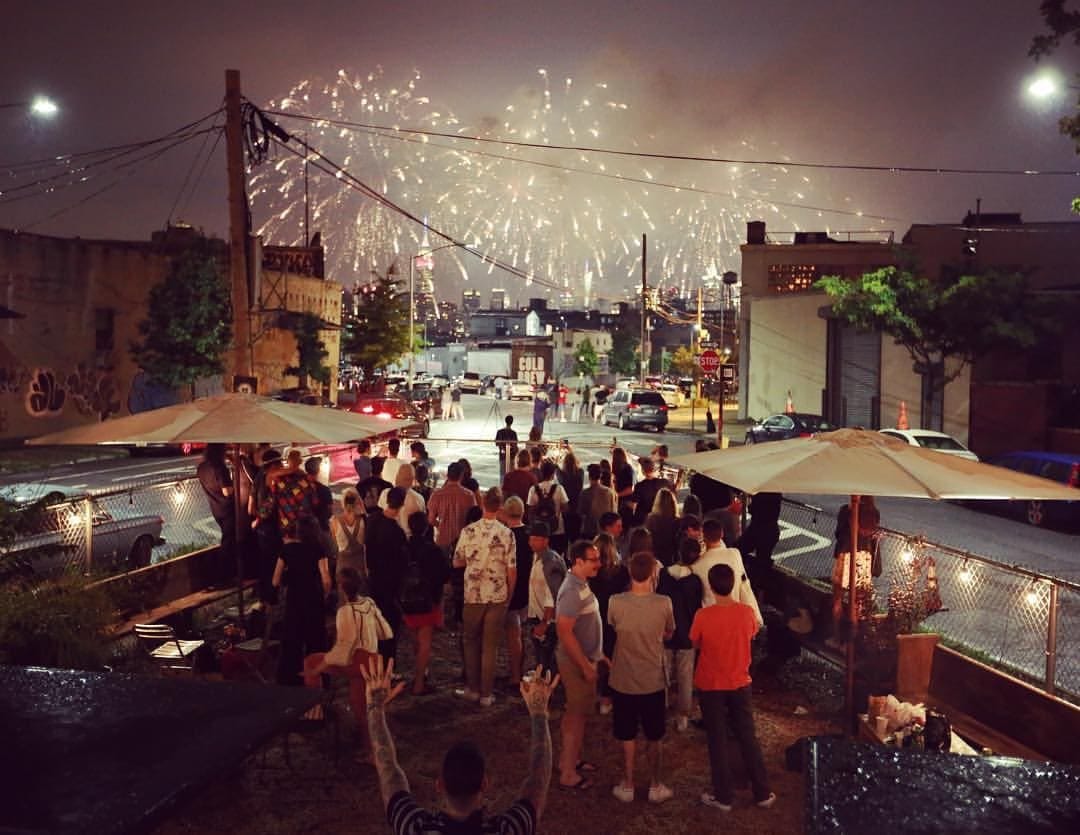
DA: Yeah, so this will kind of be a synthesis of some of the things I’ve already talked about in this conversation, but in my own neighborhood, the New York City DOT has been doing a great job of pedestrianizing spaces where there’s opportunities to do so and making them better as public spaces.
There’s an industrial part of Greenpoint where I live, adjacent to bars or restaurants, that has emerged as ad-hoc public spaces where people just liked to gather. And I think that’s one of the best ways of identifying these spaces: where do people already want to be? You can see where people are gathering, even though they’re not supposed to, and then effectively pave those cow paths. That’s a great approach because you know it’s going to be used if people already like to use it.
So there’s this one place called The Lot Radio. It’s basically a triangular fence with an empty lot inside of it that has a couple of shipping containers. And there’s a radio station that operates out of the shipping container, and it also serves coffee and drinks and maybe some food. It doesn’t look good at all, but it’s just an incredible space that people like. When it would fill up, then people would just be standing around in the streets. And more recently, that has actually been formalized, part of that triangle has been formally claimed as a non-traffic zone. And there’s a lot of events now that happen in those spaces.
And I’ve actually noticed that those types of marginal public spaces are actually better for interaction and serendipity than actual parks. I mean, both are great, but I think we should look at these pockets of opportunity in these little spaces where people feel really good for whatever reason. Again, this is not a photogenic space at all. It honestly looks kind of bad, but it is inviting. And I think that’s a really important distinction to make.
BS: On the one hand, there’s, you know, Thomas Heatherwick’s Vessel and the Hudson Yards development, and that’s one way of approaching and creating public space. And then there’s another one that’s just giving permission to something that already exists so that if something is working, despite constraints, eliminating those constraints is the easiest design solution to enabling the kind of sociability that we all hope for.
DA: Yeah, and the comparison you made is perfect because the Heatherwick sculpture at Hudson Yards, you know, it’s very photogenic. Everyone loves to take pictures of it. It’s very weird as a public space and people go there because it’s kind of like a destination. But I mean, not only is it easier and more attainable to develop these tiny little incremental spaces, but I think people actually get more utility out of them on a day-to-day basis. I think they bring more joy to the people that use them. I think we should stop trying to knock it out of the park, so to speak.
It’s one of my core beliefs that people really do know what they want. If you give them the leeway to do what they want, they will do really interesting things. And the more we can get out of people’s way and let them do cool things, then the better cityscape we’ll have.
Thanks for listening to this episode of the Frontier Magazine podcast. It’s the audio component of our weekly publication, which features appreciations from the forefronts of architecture, technology, culture, and education. Each issue shares new ideas about how design and creativity accelerate positive change. Everything we publish is available for free; browse the archive and sign up for new issues at magazine.frontier.is. If you liked this episode, please share it with people you know and rate us to help others discover what we’re doing.
The magazine and podcast are products of Frontier, a design office in Toronto. Here’s studio founder Paddy Harrington:
Frontier is a design office. We believe in the expansive potential of storytelling to help people navigate the unknown to get somewhere new. We’re coming up on a decade of designing big stories in the form of strategies, brand identities, editorial products, and digital and real-world experiences that help organizations, brands, and individuals stand out and discover new creative territory. Learn more at frontier.is.
Thanks again. I hope you’ll join us for the next episode.
This episode was produced by Heather Ngo. It features edited versions of “Thwarted Motion” and “In the Shade” by Ejeebeats, “Hybrid Tech Theme” by Geoff Harvey, “Dark Places” by Treiamusic, and “Opiating” and “Infinite Pendulum” by The Sound Room.


